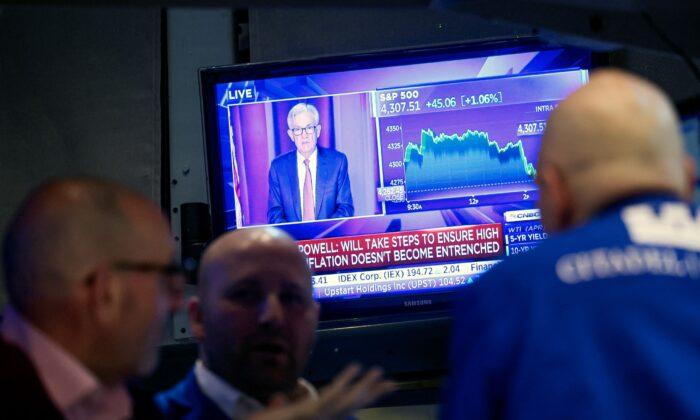The recent consumer price index (CPI) release confirmed that U.S. inflation has continued to surge to its highest annual rate in more than 40 years. The latest data have piled pressure on the Federal Reserve to rein in the economy to bring inflation under control.
CPI rose by 0.6 percent over January and has increased by 7.5 percent in annual terms, according to the Feb. 10 release by the Bureau of Labor Statistics (BLS). The last time annual inflation was more than 7.5 percent was in 1982.
While the majority of annual inflation was driven by the price surges in energy, vehicle-related items, and pandemic-affected services, this month’s numbers point to a more broad-based increase in prices.
Core CPI, which removes energy and food prices that are more volatile, over the month of January also grew by 0.6 percent, the same rate as headline CPI, while prices for vehicle-related expenses and pandemic-affected services didn’t contribute much to the January number. Both of these suggest that the drivers of inflation are starting to shift away from pandemic-related supply bottlenecks and more toward cyclical factors.
Labor Market Marches Forward
The high inflation numbers are yet another data release pointing to an economy that’s overheating. Along with inflation, the labor market continued to surge forward in January. Recently released data from BLS show that non-farm payroll employment increased by 467,000 in January. This was in spite of surging Omicron coronavirus variant cases and was markedly more than expectations collected from Bloomberg, which predicted an increase of roughly 150,000.Moreover, sectors that have been typically hit hardest by pandemic surges, such as leisure and hospitality, continued to employ people in January. This reflects both the momentum in the labor market and how the COVID-19 pandemic is now having a waning effect on the economy.
Not only were January’s numbers strong, but data revisions reveal that the labor market was much stronger at the end of 2021 than initially thought. BLS revised up employment gains in November and December 2021, with the total revision being 700,000 added jobs. These revisions suggest that the labor market has maintained strong positive momentum over 2021 and now into 2022.
“What looked like a summer surge followed by a winter freeze, now looks like a very steady growth momentum that’s not abating at all,” wrote Aneta Markowska, chief financial economist at Jefferies.
Federal Reserve Primed to Tighten
With positive momentum behind the labor market and inflation continuing to surge well beyond the Fed’s stated target of 2 percent (on average), the path is clear for the Fed to start raising interest rates at its next meeting in March.Following the high inflation numbers, financial markets responded by pricing in an 80 percent chance of a 0.5 percent rate increase in March, with more to come. The market isn’t simply acting on its own; James Bullard, president of the St. Luis Federal Reserve, only moments after the inflation figures release, said the data have made him ‘dramatically’ more hawkish.
“I'd like to see 100 basis points in the bag by July 1,” Bullard told Bloomberg News.
Some are even expecting a more aggressive approach from the Fed to tame inflation. Even before the latest CPI release, Bank of America economists were anticipating the Fed to hike rates by a total of 1.75 percentage points in 2022.
The high inflation numbers have encouraged a string of Federal Reserve officials to make more hawkish comments.
“So the task before us is to remove accommodation at the pace necessary to bring inflation under control. Doing so will help sustain the expansion in activity and healthy labor markets.”
Ultimately, the Fed wants to bring inflation under control while maintaining momentum in the labor market. An approach that’s too passive could risk inflation expectations decoupling from the Fed’s medium-term goals, while being too aggressive could slam the brakes on the economic recovery that still has significant room to grow.




